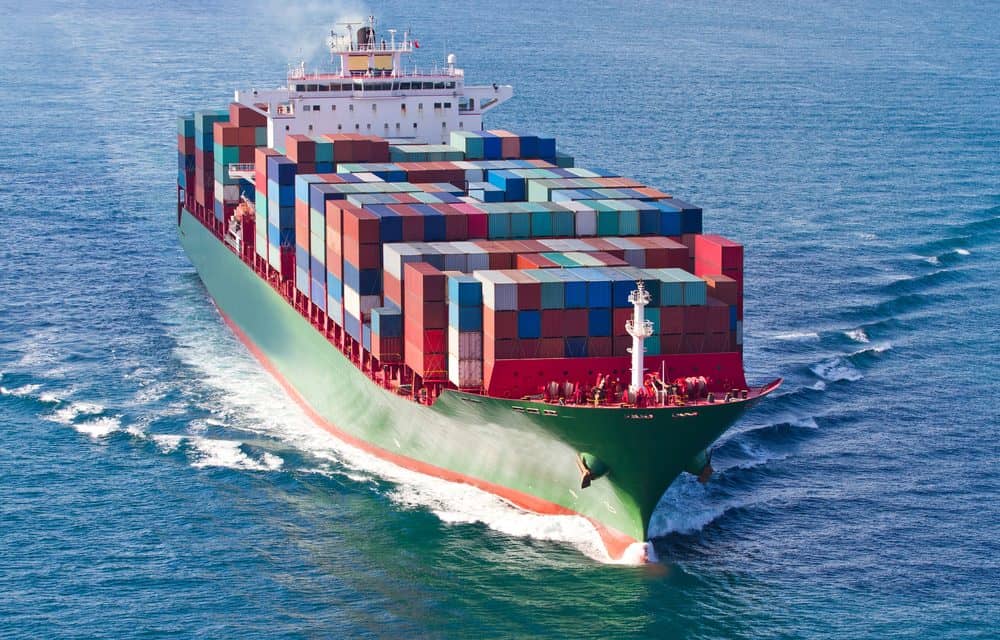$32,000 container move from China to LA

Shippers jockey for limited vessel space, but some companies are getting priced out of the market for international freight transportation
The blows to the global supply chain never seem to end in 2021, resulting in delays that have sharply reduced the system’s effective capacity and put upward pressure on shipping rates that began reaching record highs months ago. Purchasing ocean transportation has become so expensive that many companies with lower-value commodities can’t afford to import anymore, analysts and logisticians say.
Vessel operators have no extra ships to meet a tidal wave of freight demand, containers are in short supply or can’t get quickly repositioned where needed, and destination ports are piling up with boxes because they can’t keep up with the volume. The logjam, which is adding weeks of delay for major export trades from Asia, has been exacerbated by a series of weather- and COVID-related events, as well as operational mishaps.
How extreme is the situation?
One ocean carrier told a company it would cost $32,000 to ship a group of standard containers from Shanghai to Los Angeles, Craig Grossgart, senior vice president of ocean at SEKO Logistics, said during a briefing for reporters late last month.
“It was a nice way for the carrier to say, ‘We’re not interested in any more business,’ ” Grossgart said.
The quote was an outlier — the type primarily for customers asking to move large backlogs of boxes all at once — but is an indication of how desperate some shippers are and how selective carriers can be when they hold the cards.
On Wednesday, the Freightos Baltic Daily Index adjusted its methodology for tracking ocean shipping rates to include for the first time premium surcharges required for bookings, substantially raising transparency into the real cost paid by cargo owners.
The index shows Asia-U.S. West Coast rates at $18,345, six times higher than a year ago, and the price for shipping to the U.S. East Coast quadrupled to $19,620 per forty-foot equivalent unit. Rates from Asia to Northern Europe climbed 4% since last week, and are more than eight times higher than a year ago and 2.5 times more than at the start of the year.
Soaring transportation inflation is more than some can absorb.
Importers of low-value commodities, such as wooden assembled furniture, that built their business models around $1,400 shipping rates have stopped placing orders because they are losing money under current market conditions, according to shipping analysts and practitioners.
“We’ve seen customers have to make really tough decisions, prioritizing what inventory they absolutely need and which they don’t. And at a certain point, some businesses are just being priced out,” Judah Levine, research lead at Freightos, said during a company webinar last week.
Unicorn market
Shippers say they are unable to get containers or space on vessels at ports of origin, as demand for ocean freight continues to outstrip supply, keeping ports congested and prices high.
The main culprit is breakout consumer spending in North America, which has increased import levels by 10% in the first half of 2021 compared to 2019. The demand is pulling ships and equipment from other parts of the world, creating scarcity in those regions.
Consumer spending in the European Union is up 1.4% from 2019, comparable to normal annual growth.
The massive tide of imports has cascaded into air transport, trucking, rail and warehousing, overwhelming capacity in many commercial centers. Carriers canceled many sailings to help restore schedules.
Читайте також
Олійна промисловість. Світові лідери та стратегії в часи великих змін
Чорноморський та Дунайський регіони: ринки олійних культур та олій в умовах трансф...
Погодний фактор – не єдина причина, чому світ рухається до зниження цін на продово...
Сербія. Посуха принесе цього року надзвичайно високих збитків фермерам
В Україні борошно подорожчало на 50%
Напишіть нам
Наш менеджер зв'яжеться з Вами найближчим часом



